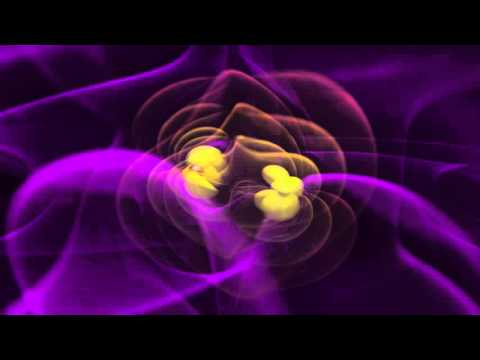This visualization shows gravitational waves emitted by two black holes of nearly equal mass as they spiral together and merge. Orange ripples represent distortions of space-time caused by the rapidly orbiting masses. These distortions spread out and weaken, ultimately becoming gravitational waves (purple). Black spheres represent the black hole event horizons, surfaces beyond which nothing can escape. The merger timescale depends on the masses of the black holes. For a system containing black holes with about 30 times the sun’s mass, similar to the one detected by LIGO in 2015, the orbital period at the start of the movie is just 65 milliseconds, with the black holes moving at about one-tenth the speed of light. Space-time distortions radiate away orbital energy and cause the binary to contract quickly. As the two black holes near each other, a new horizon forms around them, creating a single merged black hole that quickly settles into its “ringdown” phase and emits its final gravitational waves. For the 2015 LIGO detection, these events played out in little more than a quarter of a second. This simulation was performed on the Pleiades supercomputer at NASA’s Ames Research Center.
Credit: NASA/Bernard J. Kelly (Goddard and Univ. of Maryland Baltimore County), Chris Henze (Ames) and Tim Sandstrom (CSC Government Solutions LLC)
This video is public domain and may be downloaded at:

